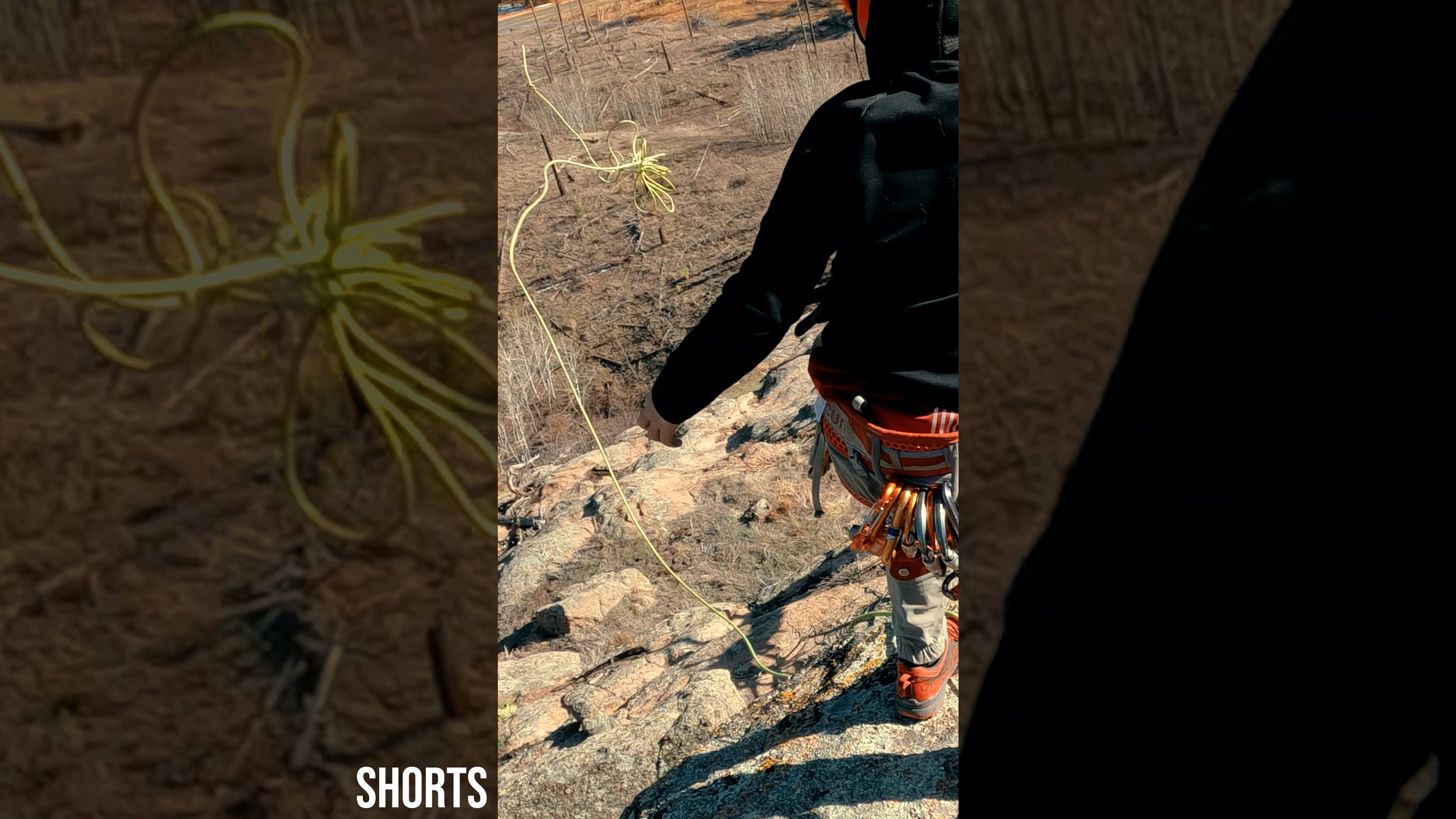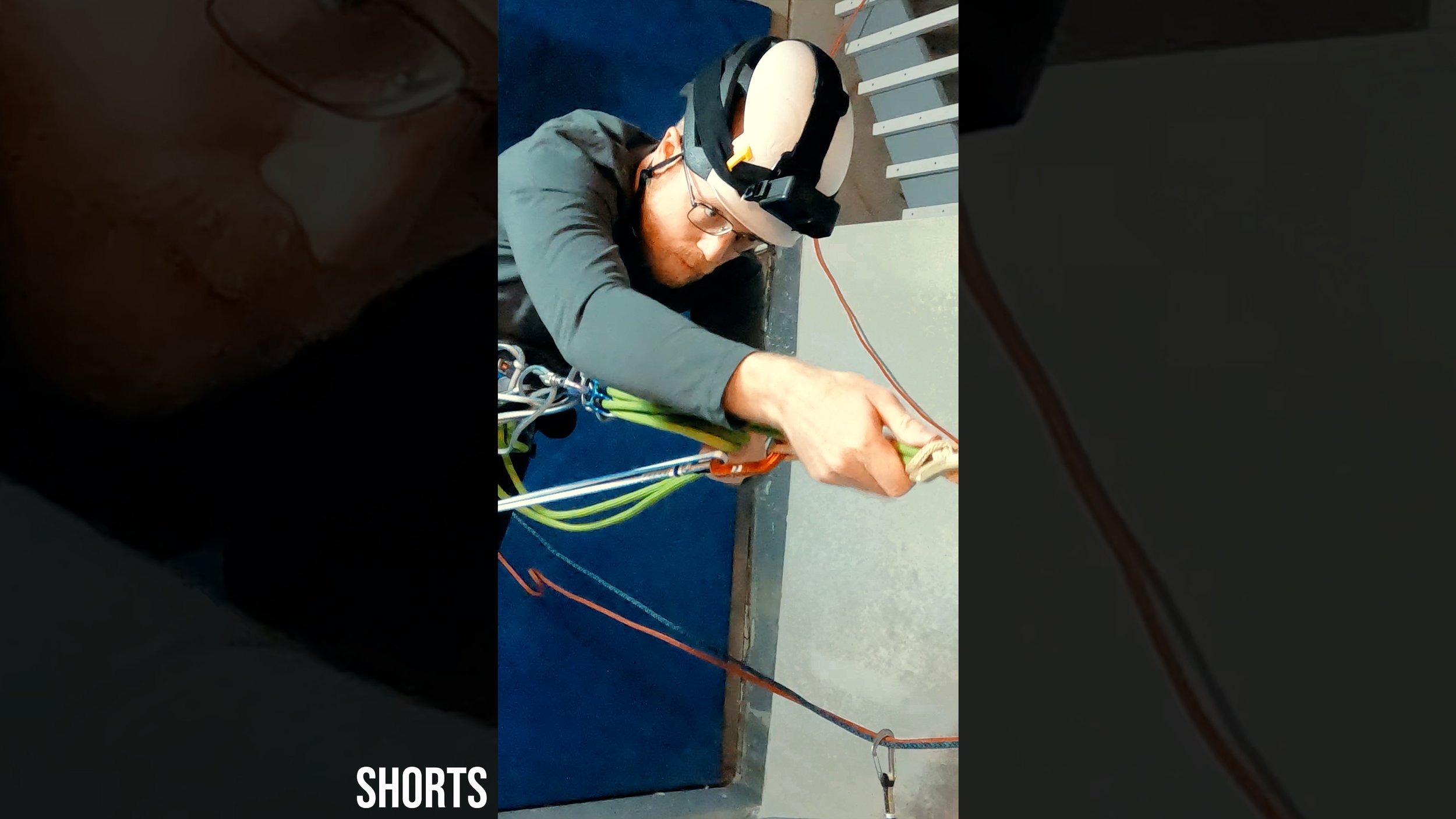Short clips
Trailers to full length videos and stand-alone quick tips; everything we make that is under 60 seconds
Preview to Multi-Pitch Rappel on Two Ropes & Considerations if Using Single Ropes or Taglines
As my climbing objectives got more technical, so did the probability of me needing to perform many rappels (abseils) down large faces to get off a route. The full video shares the procedure I was taught when using two climbing ropes along with how the procedure may change if using a single rope or a single rope with a tagline.
Which Knot to Use? Overhand on a Bight Versus Figure Eight on a Bight
The single question I have probably been asked the most is if it is "better" to use an overhand on a bight or a figure eight on a bight in many climbing applications. Like all things in climbing, "it depends." Here are some of the considerations that run through my mind when deciding which knot to use.
Preview to Overcoming the Fear of Rappelling in New Climbers: Lessons from My Kids
I've instructed a lot of new climbers, but teaching your kids to climb puts what works and what doesn't into stark relief. The full video goes into why and how I approached teaching rappelling to my kids, helping them overcome the natural fear that comes from easing yourself over a cliff.
Petzl Sm'D Carabiners Help You Avoid Dropping Your Climbing Gear
Smaller pieces of climbing gear become easier items to drop, and that risk only increases when we are wearing gloves. Tethers can be helpful and even more so with carabiners specifically designed to keep the tethers out of the way of the gate opening.
Preview to Tossing a Climbing Rope for Rappel (Abseil): Three Ways for Three Conditions
Cleanly throwing your ropes down a pitch for a rappel can mean the difference between a safe and efficient retreat from a face and a potential epic (or worse). If you have increasing winds or terrain below you that is likely to catch a thrown rope, you may need to use different techniques for getting the ropes down. The full video provides three ways we get our rappel ropes to the bottom to deal with increasingly severe challenges to a clean toss.
Remember to Tuck in Your Shirt for Added Climbing Safety
Little things add up to big risks when we are climbing in vertical environments. One part of my pre-climb safety check includes making sure I have my shirt tucked in so that I can better manage my gear.
Preview to Stubborn: An 8 Month Indoor Climbing Project and Training for Twin 8-Year-Olds
Our home wall overhangs at thirty degrees. After graduating from jugs, the boys wanted a challenge and so asked for me to set a route on twenty millimeter edges. When the route proved too difficult for them to make easy progress, rather than ask me to change it, they asked for a training plan and expressed a desire to learn how to project a route. Eventually, they were able to climb the route on lead. This full movie documents the eight months they spent training and working the route.
Are Your Climbing Ropes, Slings, and Harnesses Still Safe?
Proper care of climbing gear doesn't always mean just keeping it in working order. For soft goods, sometimes proper care means tracking how old the equipment is. Soft goods can deteriorate even without use, and with use they wear down even faster. So, we need to know when those goods should no longer be used even if they aren't visibly damaged.
Preview to How to Transition from Rappelling on Two Climbing Ropes to Ascending the Ropes
When climbing multiple pitches, you may end up having to perform multiple rappels. That adds in risks such as rappelling off route, past the anchor, or getting ropes stuck as you pull them. Any of these scenarios may demand that you ascend the rappelling ropes. The full video demonstrates how to switch from rappelling to ascending when you are using two strands on rappel.
The Benefits of Carrying an Extra Quickdraw on All My Climbs
I'm certainly going to have quickdraws with me if I'm on a technical rock or ice climb. But I make sure to carry an extra that never gets racked onto a standard gear placement. Having an extra quickdraw provides versatility to help me deal with myriad contingencies in the mountains and one a climb.
Preview to a No-Gear Rappel Anchor: How and Why to Use an Equivocation Hitch
You've run out of anchor gear, or you have damaged ropes, or you need to stay tied into the climbing rope, or... or... or; there are some compelling reasons to use an equivocation hitch for a rappel, and it can be done safely with a single rope or with doubles or with a tagline, but you better construct it correctly. The full video goes deep into setting this up and when you might want to use it.
How to Tie the Flat Overhand Bend to Join Two Climbing Ropes
We can join two climbing ropes using the flat overhand bend. Learn how to tie this knot, learn some of its advantages, and some of the constraints on using the knot by checking out this video.
Preview to Are You Choosing the Right Climbing Rope? Pros and Cons of Taglines and Doubles
If you ever have to retreat from a multi-pitch climb, you may want to rappel (or abseil) full rope lengths to reduce the total number of rappels you need to do. That's why having taglines or sets of double or twin ropes often make a lot of sense for big climbs. The full video explores the pros and cons of these rope choices in terms of use and demands they make of our anchors and systems.
Why I Set My Third Hand Before My Device When Getting Ready to Rappel
It's a little thing, but getting both myself - and especially my kids - to transition into rappel systems faster can add up over many pitches. So, anything we can do to make it less likely to faff with ropes, our devices, or other gear, we'll take. Setting our third hand, autoblock hitch helps us manage the ropes and thread our rappel device more easily.
Preview to Reframing Adventure to Help Me Balance Risks in Life and Climbing
It's Mental Health Awareness Month so we are discussing some of the mental aspects of adventuring. Climbing is dangerous. I think it can be done safely, but that shouldn't be read as "perfectly safe." This is especially true of alpine and high altitude climbing, which are my preferred styles and which come with more complex, objective dangers. So, I think a lot about how to keep my personal risk profile manageable, and the full video shares that one way I do it is to diversify my outdoor activities.
Better Climbing Team Dynamics: The Law of Plus One
May is Mental Health Awareness Month, and so we are adding to our series of videos on some of the mental aspects of climbing and other outdoor adventures. My climbing mentors often talked to me about the Law of Plus One for expedition success. What is it and how does it help team dynamics?
Preview to What Stands Out About the Climbing Partners I Turn to Again and Again?
It's Mental Health Awareness Month so we are discussing some of the mental aspects of adventuring. When my climbing partners and I climb for similar reasons, there are a host of advantages. The full video explores this often overlooked factor in finding compatible climbing partners that stands out, to me, as the most distinguishing factor between a good climbing partner and a great one.
Quiet Courage in Climbing: Only Good to a Point
May is Mental Health Awareness Month, and so we are adding to our series of videos on some of the mental aspects of climbing and other outdoor adventures. When does self-reliance become deflection? We all need help sometimes, and our teams need to know where things stand. There is no easy answer, but we can often recognize the line once we've crossed it.
Preview to How the Feedback Trap Hampers Risk Management in Climbing and Outdoor Adventures
It's Mental Health Awareness Month so we are discussing some of the mental aspects of adventuring. We've all heard, "climbing is an inherently risky activity," and we do our best to understand and manage those risks. But we also sometimes don't notice when we've "gotten lucky," The full video goes into how we assess our climbs when we can't always really know how far away or close we were to disaster?
Gym Training Plays a Very Important Role for Alpine Climbing
May is Mental Health Awareness Month, and so we are adding to our series of videos on some of the mental aspects of outdoor adventures. Climbing involves complex movements that are hard to completely mimic in a gym environment. But there is one important feature a gym has that a mountain doesn't.




















